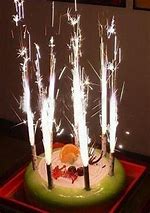There’s a tradition in China that involves the exchange of red envelopes when someone wants to express gratitude toward another person or wish them well. They would put money in the red envelope and give it to them.
No one really knows how the red envelope tradition started. One theory revolves around a David-and-Goliath storyline: A young boy defeated a demon that no one else in his village could seem to destroy. He used a magic saber for which he was rewarded with a red envelope filled with money. Another theory is that it stems from the red paper couplets that the Chinese would paste on both sides of their front door to scare away a demon who eats people.
Regardless, somewhere in history red envelopes came to represent a grateful exchange between two parties as well as a protective measure against anything evil.
Today red envelopes filled with money are typically given to young unmarried relatives during the Chinese New Year. Also, at weddings the bride and groom give envelopes to young unmarried relatives. Inside would be money or other items of value (jewelry) or items that represented well wishes, such as candy, an image of the Buddha, etc.
Here are some traditional tips about giving red envelopes:
- Use only crisp bills, not old wrinkled ones.
- Do not put coins in a red envelope
- Do not put in amounts that add up to “4” as the homonym for death is the same as the sound for 4. Having money add up to 8 or 9 is best.
- Prepare red envelopes in advance. Do not be putting money in the envelope in front of the person to whom it will be given.
Here are some tips for receiving red envelopes:
- Receive the envelope with both hands and express your gratitude.
- Do not open the envelope in front of the person from whom you received it.
- Do not reuse the envelopes. Instead burn them ceremoniously.
If this is a bit too traditional or bothersome, the latest way to exchange red envelopes is through WeChat red envelope, an online money transfer. No actual envelopes are exchanged but the well-wishes are the same.














Recent Comments